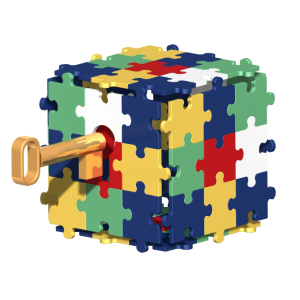I have space toys, but Laban liked to play space games. He played one game over and over and over and over again and again ….
His favorite game went something like this: start at one corner of a polyhedron – it can be a cube, octahedron, or icosahedron. Then trace a line touching every corner only once and return to the corner where you began.
Unpublished drawings in the Laban Archive in England show that Laban played this game over and over again. When he found a pattern that he liked and one that made bodily sense, it became a Choreutic sequence.
Too often, Choreutic forms are taught through imitation and students are expected to accept the sequence as something “good for you.” Where is the fun in that?
In “Bringing Choreutics to Life” we approach Laban’s geometrical sequences with a sense of play. We will work with props and music; we will sing while we do them; we’ll turn them into folk dances and swordplay; and we will search for fragments of Choreutic forms in dance, mime, and circus acts. In short, we will have serious fun!
Find out more about the Octa….






 The latter assessment is the more difficult, for as the novelist Thomas Mann notes, “Our consciousness is feeble; only in moments of unusual clarity and vision do we really know about ourselves.”
The latter assessment is the more difficult, for as the novelist Thomas Mann notes, “Our consciousness is feeble; only in moments of unusual clarity and vision do we really know about ourselves.” Movement is a process of change. This seems self-evident. And yet, when the analytical brain is focused on motion and change, understanding breaks up the flowing continuity into successive and distinct positions and states. What was dynamic becomes static, what was becoming becomes an invariable being.
Movement is a process of change. This seems self-evident. And yet, when the analytical brain is focused on motion and change, understanding breaks up the flowing continuity into successive and distinct positions and states. What was dynamic becomes static, what was becoming becomes an invariable being. A wise man once observed that prayers are always answered. But what comes to you is not what you think you want, but what you embody.
A wise man once observed that prayers are always answered. But what comes to you is not what you think you want, but what you embody.
 Thoughts and feelings cannot be observed directly, but they can be inferred from how a particular action is performed. Laban conceived the how of human movement as
Thoughts and feelings cannot be observed directly, but they can be inferred from how a particular action is performed. Laban conceived the how of human movement as